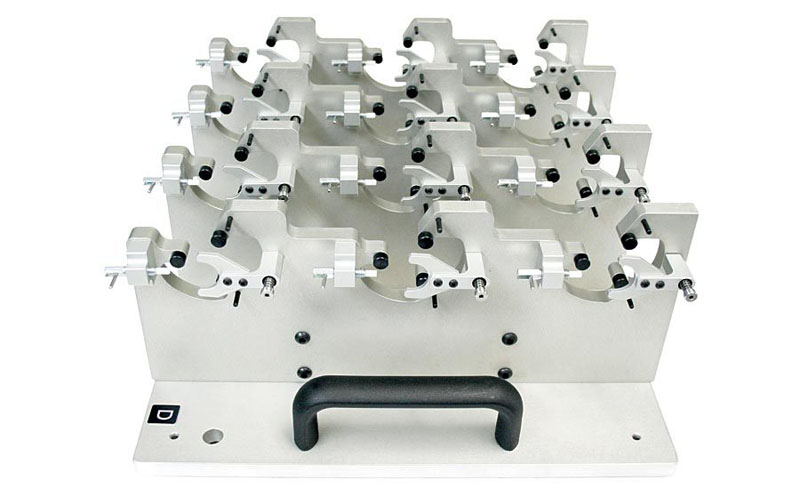In the intricate world of CNC (Computer Numerical Control) machining, where precision is king, CNC fixtures emerge as unsung heroes, ensuring the accuracy and stability of the machining process. Let’s embark on a journey to explore the significance, types, and key considerations of CNC fixtures.
1. The Role of CNC Fixtures: Precision Amplifiers
At the heart of CNC machining lies the need for precision, and CNC fixtures are the architects of this precision. A CNC fixture is essentially a dedicated device that secures and supports a workpiece during machining. This seemingly simple tool plays a pivotal role in achieving consistency and accuracy in the final product.
2. Types of CNC Fixtures: Tailoring to Needs
CNC fixtures come in various types, each catering to specific machining requirements:
Vise Fixtures:
These are common and versatile, holding workpieces between two jaws. Ideal for milling and drilling operations.
Collet Fixtures:
Utilizing collets to grip cylindrical workpieces, they are excellent for achieving concentricity.
Magnetic Fixtures:
Using magnetic force, these fixtures secure ferrous workpieces without the need for clamping, facilitating quick setups.
Vacuum Fixtures:
Employing vacuum pressure, these fixtures are suitable for holding thin or flat workpieces, minimizing any distortion.
According to usage, it can also be divided into the following types
Basic fixture:
Including three jaw chuck, four jaw chuck, tip, etc., mainly used for fixing workpieces.
Positioning fixture:
Including various locators, support points, etc., mainly used for precise adjustment of workpiece position.
Clamping fixture:
Including various bolts, nuts, etc., mainly used to fix the workpiece on the machine tool.
Combined fixture:
Composed of multiple fixtures, with higher adaptability and flexibility.

3. Design of CNC Fixture
Determine the characteristics of the workpiece:
Conduct a detailed analysis of the shape, size, material, etc. of the workpiece to determine the required fixture type and specifications.
Choose the appropriate clamping method:
Based on the characteristics and processing requirements of the workpiece, choose the appropriate clamping method, such as pneumatic, hydraulic, or electric.
Accurate positioning design:
Based on the shape and processing requirements of the workpiece, design an accurate positioning mechanism to ensure the stability and accuracy of the workpiece.
Consider ease of operation:
While meeting processing requirements, try to simplify the operation steps as much as possible to improve production efficiency.
Consider maintenance and upkeep:
Design a fixture structure that is convenient for maintenance and upkeep, and extend the lifespan of the fixture.
4. Precautions for using CNC fixtures
- Correctly select the type and specification of fixtures according to processing requirements.
- Install and debug the fixture correctly according to the instructions.
- Pay attention to the working status of the fixture during use and adjust it in a timely manner to ensure machining accuracy.
- Regular maintenance and upkeep of fixtures to maintain their good working condition.
- Pay attention to operational safety and avoid safety accidents caused by improper operation.
5. Advantages of CNC Fixtures:
Enhanced Precision:
The primary purpose of a CNC fixture is to achieve the utmost precision in machining, leading to high-quality finished products.
Increased Efficiency:
Proper fixturing reduces setup times, enabling quicker transitions between different machining operations.
Strong adaptability:
CNC fixtures can adapt to workpieces of different shapes, sizes and materials, providing solutions for various processing needs.
Cost Savings:
By minimizing errors and rework, CNC fixtures contribute to cost-effectiveness in the production process.
Innovations in CNC Fixturing:
With advancements in technology, smart fixtures equipped with sensors and automation are becoming prominent. These fixtures can adapt to changing workpieces and optimize machining parameters dynamically.
Conclusion:
In the intricate dance of CNC machining, CNC fixtures stand as silent choreographers, orchestrating movements with precision. Understanding the types and considerations of CNC fixtures is pivotal for machinists and manufacturers aiming for excellence in their craft. As technology evolves, so too will the capabilities of CNC fixtures, further pushing the boundaries of what’s achievable in the world of precision machining.



